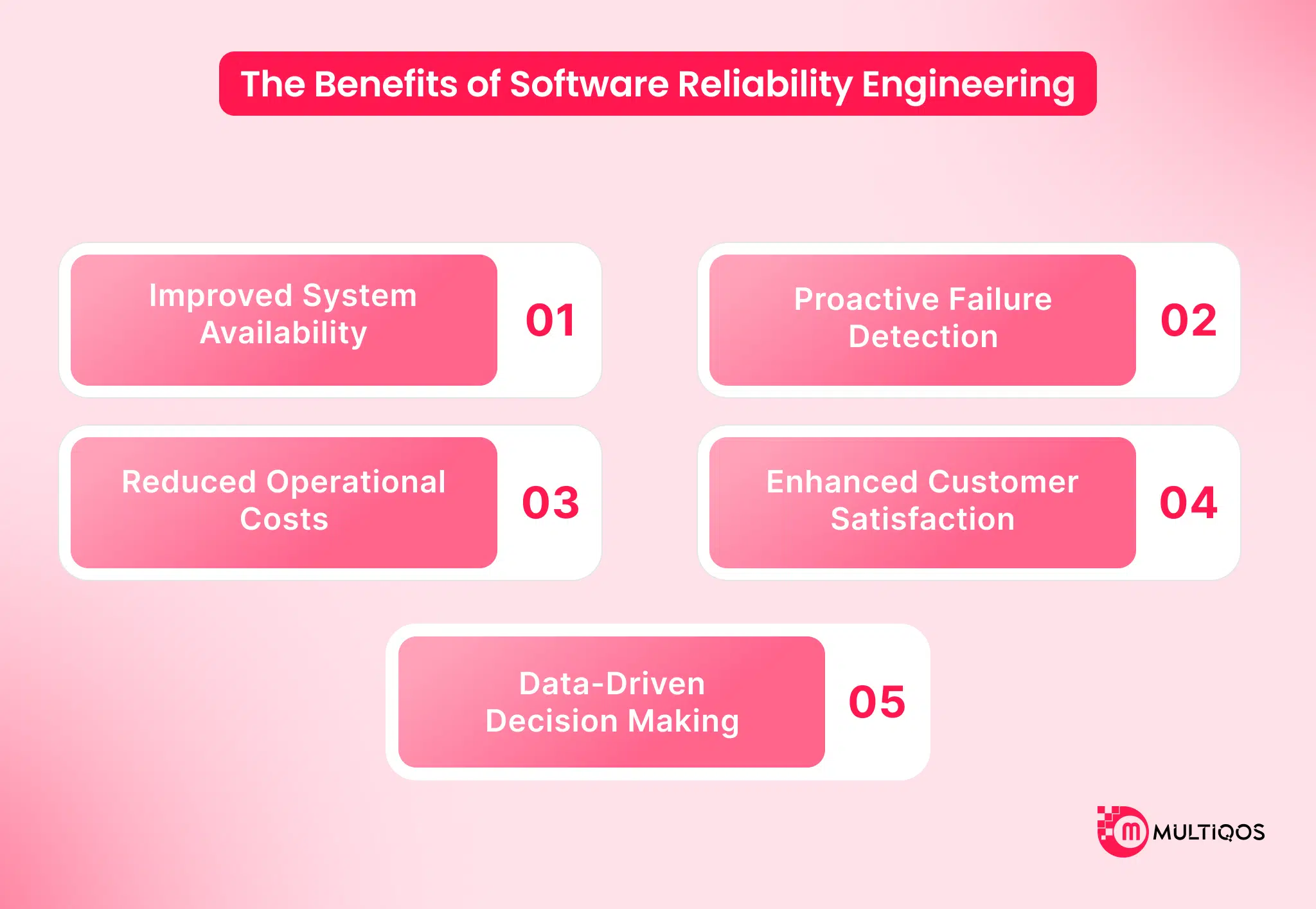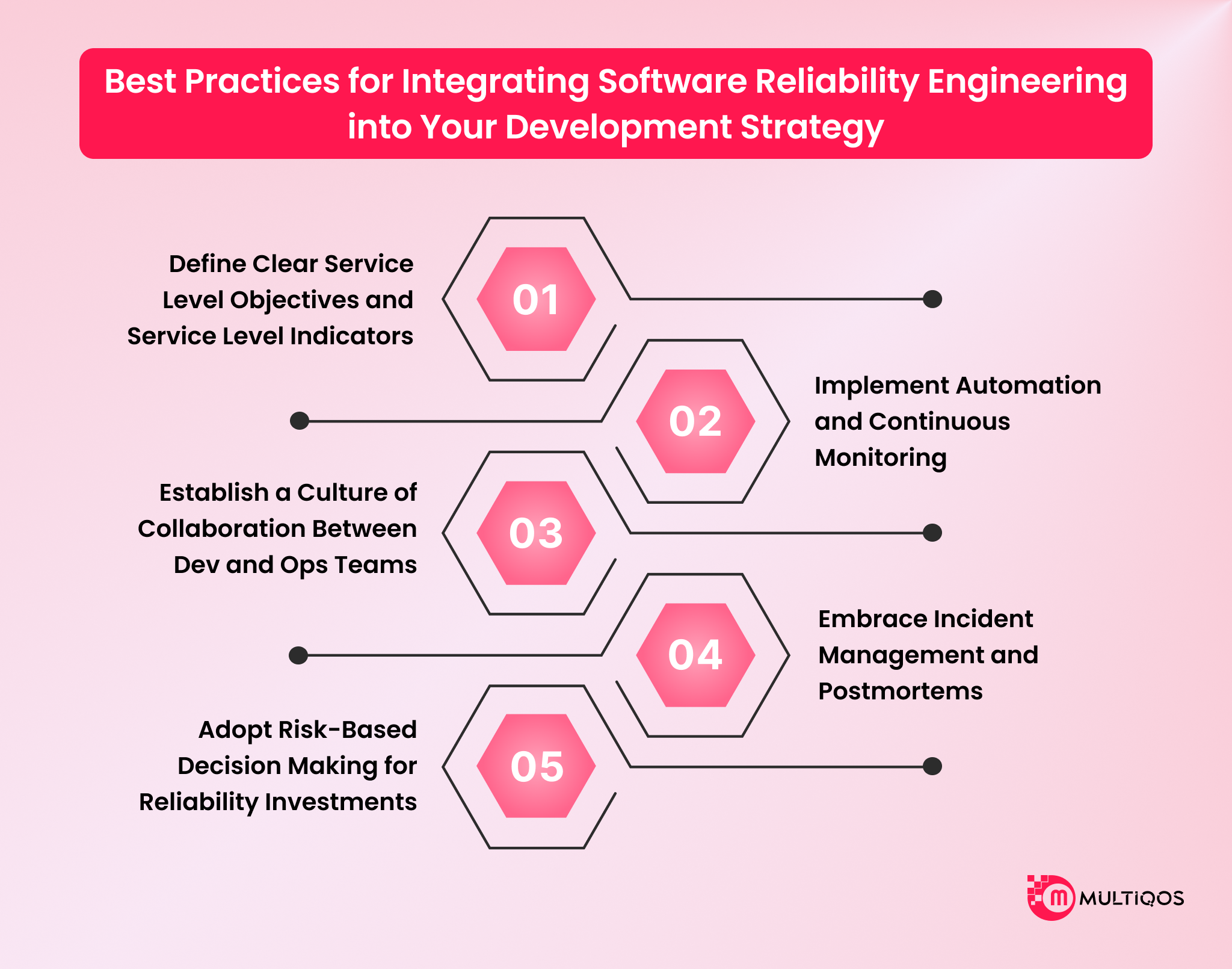Software Reliability Engineering: Why It Should Be Part of Every Development Strategy

Summary:
Software Reliability Engineering (SRE) is crucial for ensuring robust, stable, and high-performing software products. By integrating SRE practices into development strategies, teams can proactively identify and address potential failures, minimize downtime, and enhance user satisfaction. This approach focuses on creating reliable systems through continuous monitoring, automation, and performance testing.
As software complexity increases, incorporating SRE not only improves product quality but also reduces the cost of fixing issues post-launch. In today’s fast-paced development environment, making software reliability a priority can give organizations a competitive edge, ensuring long-term success and customer trust.
Introduction
Ensuring that applications run easily, without unexpected failures or downtime, is more crucial than ever. As organizations strive for faster deployment cycles and increasingly intricate systems, the need for robust software precision has never been more pressing. This is where software reliability engineering (SRE) comes into play. Software reliability engineering is a discipline focused on designing, building, and maintaining software systems that meet high standards of exactness and performance.
By harmonizing SRE procedures into your growth strategy, you not only improve user satisfaction but also minimize costly operational outages and elevate product quality overall. In this blog, we’ll probe why software reliability engineering should become a cornerstone of all prosperity strategies and how it can transform the way you plan system reliability in an age of ongoing technological development.
What is Software Reliability Engineering?
Software reliability engineering (SRE) focuses on ensuring that software applications are robust and dependable as expected under various limitations. It involves a combination of proactive approaches like risk investigation, failure mode identification, and fault tolerance mechanisms to minimize the likelihood of system failures. The goal is to deliver software that meets high standards, often through testing, monitoring, and steady advancement of the expansion procedure.
In the context of software development services, SRE plays a noteworthy role in upgrading the quality and resilience of applications. By joining fidelity-dedicated strategies throughout the evolution lifecycle, organizations can certify that their software not only performs easily even so remains stable, scalable, and get, steady as it evolves. This approach helps form a belief with users and stakeholders, reducing the impression of unforeseen issues.
The Benefits of Software Reliability Engineering
Software reliability engineering (SRE) focuses on ensuring that software systems are dependable, undaunted, and can handle predicted workloads over time with minimal failure. Here are five major advantages of implementing SRE practices:
1. Improved System Availability
Software reliability engineering (SRE) ensures systems stay obtainable and perform well, balanced under high demand. Through steady monitoring, premature failure detection, and hurried recovery systems, SRE minimizes downtime and maintains smooth operations.
2. Proactive Failure Detection
SRE focuses on identifying capability failures previously they occur. By using monitoring tools and valid-time breakdown, teams can address issues prior, preventing costly disruptions and ensuring stable routine performance.
3. Reduced Operational Costs
Software reliability engineering practices help reduce operational costs by preventing approach failures and minimizing downtime. Automatic methods and skilled property management optimize operations, premier to lower infrastructure costs and fewer dangerous fixes.
4. Enhanced Customer Satisfaction
By ensuring software validity, SRE leads to fewer outages and performance issues, which increases user understanding and builds customer reliance. Regular uptime and smooth functionality contribute to higher customer satisfaction.
5. Data-Driven Decision Making
Software reliability engineering relies on data review to inform improvements. Performance metrics and failure logs help teams make decisions based on evidence, ensuring engaged enhancements and a more reliable software locale.
What does a Software Reliability Engineer do?
A Software Reliability Engineer (SRE) focuses on ensuring that software systems are stable, reliable, and perform optimally under varying conditions. Their role involves identifying potential risks, implementing automated monitoring, and establishing recovery protocols to prevent downtime. They collaborate closely with advancement teams to merge precision practices promptly in the software growth lifecycle, ensuring that applications can handle advancement, traffic spikes, and unexpected failures without great disruption.
In addition to working on operational exactness, SREs also optimize software infrastructure and contribute to persistent advancement. They often work alongside DevOps solutions to streamline deployment strategies, automate tests, and elevate workflow scalability. Their work ensures that software not only meets user demands although beyond remains valiant, cost-effective, and synchronized with the business’s long-term plans.
Best Practices for Integrating Software Reliability Engineering into Your Development Strategy
Software reliability engineering (SRE) into your improvement strategy is vital for creating gallant, scalable, and high-performing systems. To do so well, there are several optimal practices you can adhere to. Here are five key ones:
1. Define Clear Service Level Objectives and Service Level Indicators
Identifying Service Level Objectives (SLOs) and Service Level Indicators (SLIs) is key for helpful Software reliability engineering (SRE). SLOs set truthfulness ends like uptime or comment time, while SLIs track progress toward those ends. This ensures nonstop advancement and positioning with user expectations, assisted by a real-time solution in DevOps in modern software development.
2. Implement Automation and Continuous Monitoring
Robotics and constant monitoring are necessary for maintaining operational perfection. By automating testing, deployment, and monitoring, you can reduce errors and detect issues immediately. Continual monitoring helps identify and resolve abnormalities sooner than they cause users, ensuring systems remain stable under any limitations.
3. Establish a Culture of Collaboration Between Dev and Ops Teams
SRE is most productive when growth and operations teams collaborate closely. By blending rightness implementations before time in the expansion operation, both teams can address ability issues proactively, ensuring a more effective and reliable method.
4. Embrace Incident Management and Postmortems
Incident management and postmortems are key to studying from failures. When issues occur, thorough postmortems identify root causes and help teams implement strategies to prevent similar problems. This gradual advancement cycle amplifies steps correctness over time.
5. Adopt Risk-Based Decision Making for Reliability Investments
Consistent investments should become supported by risk-emerged resolution-building. Prioritize improvements that address the highest risks to users and business objectives, ensuring that funds are used clearly and the system becomes more robust without unnecessary overhead.
Conclusion
Integrating Software Reliability Engineering (SRE) into your development strategy is vital for ensuring that your software systems are both dependable and scalable. By focusing on key practices like proactive monitoring, failure detection, and continuous improvement, SRE helps minimize downtime and enhance system resilience. As businesses face increasingly complex digital landscapes, prioritizing reliability ensures that your applications can handle growth and perform seamlessly under any conditions.
To successfully embed these practices into your development process, it’s crucial to have experts who understand the nuances of SRE. If you’re looking to strengthen your software’s reliability, hire dedicated developers with expertise in this field. Their specialized skills will help you implement the right strategies, ensuring that your software not only meets current needs but remains stable and scalable for the future.
FAQs
SRE is essential because it helps maintain high availability, performance, and stability of software systems. As applications become more complex and critical to business operations, ensuring that they function reliably without interruption becomes paramount. SRE practices reduce the risk of system failures and ensure smoother user experiences, leading to higher customer satisfaction.
While traditional software testing focuses on detecting bugs and ensuring functionality, SRE takes a broader approach to long-term system reliability. SRE goes beyond just testing to focus on system performance, scalability, uptime, and fault tolerance under real-world conditions. It’s about building resilience into the software from the ground up, not just testing for correctness.
DevOps and SRE share common goals, particularly around automation, collaboration, and continuous improvement. In modern software development, DevOps practices support the implementation of SRE by enabling faster deployments, more efficient incident management, and better monitoring. The synergy between the two approaches helps ensure that systems are both reliable and agile, adapting to changes quickly while maintaining high performance.
If you’re looking to integrate Software Reliability Engineering into your development process, our team of experts can help you implement the best practices tailored to your needs. Whether you need guidance on defining SLOs, setting up continuous monitoring, or optimizing your system’s reliability, we offer specialized services to enhance your software’s performance and scalability. Contact us today to learn how we can help you build more reliable, resilient, and high-performing systems.
Get In Touch








